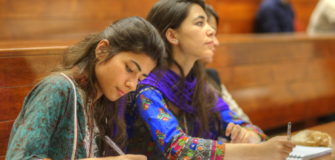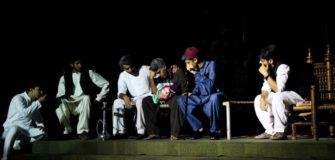Final Year Project – Macrobenthic Community Structure in the Vicinity of Restaurants Near Dodarya At Clifton Beach
Share

Consuldents would like to present a preview of the Final Year Project of Ayman Fatima and team. If you would like to know more about the topic, get in touch at 96aymanali@gmail.com for more details. If you are a graduate student in Pakistan and would like to showcase your FYP to the world, get in touch with us at info@consuldents.com.
Introduction: Sandy beaches are physically dynamic benthic environment and one of the vastest intertidal systems in the world. They dominate the world’s coastlines in temperate and tropical zones and are important sites for human recreation maintaining many coastal economies around the world and provide habitat for a diversity of terrestrial as well as for marine life. Faunal communities of sandy beach are primarily structured by the physical conditions they endure.
Sand and silt are the most abundant kind of sediment in the bed of sandy beaches where organic detritus (decomposed material) is found with minerals and serves as food. Hence it strongly influences the underwater life in relation to sediment. Diversity and abundance are generally known to increase with substrate stability and the presence of decomposed material. Exposed sandy beaches are harsh environments and strongly stressed by physical conditions where macrofauna distribution has been typically related to beach morph dynamic factors, such as slope and sediment characteristics.
In Pakistan, the coastal areas of Karachi accommodate well over 60% of the country’s industries. Sandy beaches of Karachi, particularly Clifton and Korangi Creek are getting a lot of pollutants. The abundance and distribution of benthic macrofauna in nearshore waters of Karachi were also reported. Very little information on the abundance and species composition of macrofauna from the sandy beaches of Pakistan is available.
Aim and objective: Recently we have conducted a research study to analyze the rate of pollutants at the Clifton coast. Those pollutants can either be due to drainage and sewage contaminants or by the locals who come here for amusement but directly harm the natural ecosystem. To analyze the concentration of pollution we compared our research results with the study that was conducted by Nazia Arshad and Sumera Farooq in 2007 and Ahmed and Hameed in 1999.
The main objective of this study was to evaluate the impacts of anthropogenic activities (i.e. human activities) on benthic organisms collected from three different sites of Clifton beach. Benthic organisms are the ones that live in the soil of the coast and are the ones that are directly affected by human activities.
Study area: For this purpose, we marked three stations varying on the basis of anthropogenic activities and to evaluate impacts of trampling (i.e. walking over) on macrofaunal communities and their responses to trampling intensities. This study was conducted at three stations C1, C2 and C3 of most commonly visited beach i.e. Clifton of thickly populated Karachi city to record changes in benthic communities near busiest restaurants.
C1 is located on the opposite side on Khayaban-e- Sahil st.31 near Dodarya. It is relatively less affected by anthropogenic activities and no trampling observed. C2 is located at main sea view near Bruno restaurant. Anthropogenic activities, as well as trampling, observed. It is relatively an intermediate site. C3 is located on the opposite of Dolmen Mall, Clifton. It is the most disturbing side due to the presence of the mall and park near it.
Our study was also carried out in three different months September, October, and November. We choose these months for their variation in seasons. September was Late Southwest Monsoon Season (LSMS), October was Post Monsoon Season (POMS) and November was (North East Monsoon Season (NEMS).

Picture: Map of study area showing studied stations (C1, C2, and C3) extracted from Google Earth Pro 2009.
Conclusion: On the basis of present study maximum abundance of macrobenthic species was reported from C1 during NEMS because in November the seawater is backed from the coastline and the maximum beach is exposed which included Donax sp. in highest quantity due to favorable conditions for its growth. The structure of soil organisms is determined by several ecological.
Conditions of the environment particularly temperature, salinity, light and sediment characteristics and water content of the sediment greatly influence the communities. Coastal development around the world is profoundly damaging the beach ecosystems. Besides the physical factors of the environment and pollution, the sandy beach of Clifton is subject to a great degree of human disturbances.
















Hey There. I found your blog tthe use of msn. That is a really
well written article. I will make sure to bookmark it
aand come back to read more of your helpful information.
Thanks for the post. I will definitely comeback. https://www.tosuresure.com/bbs/board.php?bo_table=2&wr_id=5
you are actually a just right webmaster. The web site loading speed is amazing.
It seems that you are doing any unique trick. In addition, The contents are masterpiece.
you’ve performed a wonderful process on this topic! https://socialbots.xyz/